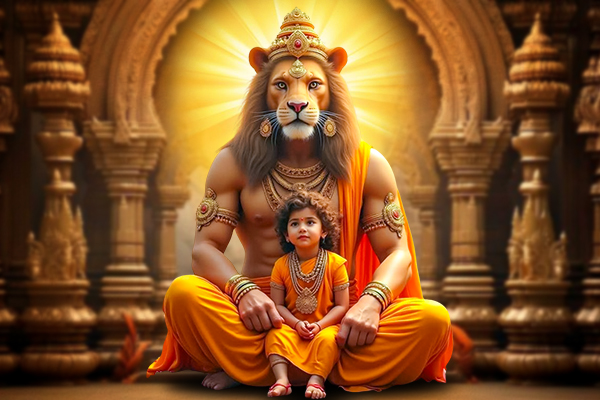
Narasimha Jayanti, a deeply revered day in the Hindu calendar, marks the divine incarnation of
Bhagwan Vishnu
as Narasimha, the man-lion. This incarnation is celebrated for its embodiment of the power and protection of the Divine, symbolizing the victory of good over evil. Narasimha, with his fierce and protective nature, emerged to protect his devotee Prahlada and restore righteousness by destroying the demon king Hiranyakashipu, who had become a symbol of unrighteousness and tyranny.
In 2026, Narasimha Jayanti will be observed on
Wednesday, April 29, 2026.
This day holds immense spiritual significance, as it is believed to invoke the blessings of Narasimha, who is revered for his ability to protect his devotees from all dangers and remove the obstacles of life. On this sacred day, devotees engage in fasting, prayers, and chanting of Narasimha's sacred mantras, seeking his divine protection and grace. The day also emphasizes the importance of faith and surrender to the Divine will, as Narasimha's divine intervention showcases the strength of devotion in overcoming adversities.
Observing Narasimha Jayanti with devotion is said to bring peace, spiritual strength, and protection from negative influences, guiding individuals on the path of righteousness. It is a time to reflect on the victory of truth, the power of faith, and the unwavering support of the Divine in the journey of life.
Festival Date, Time, Muhurat & Tithi
Narasimha Jayanti on Wednesday, April 29, 2026
Narasimha Jayanti Sayana Kala Puja Time - 05:11 PM to 07:54 PM
Duration - 02 Hours 44 Mins
Next Day Parana Time for Narasimha Jayanti - after 08:42 AM, Apr 30
On Narasimha Jayanti Parana Day Chaturdashi End Moment
Narasimha Jayanti Madhyahna Sankalp Time - 11:43 AM to 02:27 PM
Chaturdashi Tithi Begins - 07:21 AM on Apr 29, 2026
Chaturdashi Tithi Ends - 08:42 AM on Apr 30, 2026
On Narasimha Jayanti Parana Day Chaturdashi would be over before Sunrise.
Note: Sunrise and sunset vary by region and date due to India's geographical diversity. For exact timings, please refer to local astronomical data.
Significance & Importance of Narasimha Jayanti
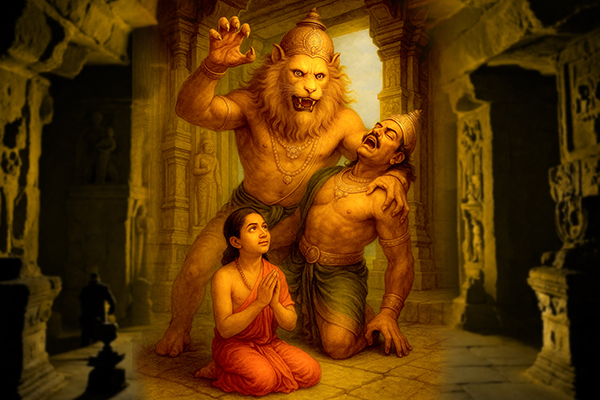
Narasimha Jayanti holds a deep and profound significance in the Hindu tradition, symbolizing the victory of good over evil, the power of devotion, and the protection of the righteous by the Divine. This day commemorates the incarnation of Bhagwan Vishnu as Narasimha, the man-lion, who appeared to protect his devotee Prahlada and restore cosmic order by destroying the demon king Hiranyakashipu. The story of Narasimha is not only dramatic but also filled with spiritual lessons that resonate deeply with devotees.
Bhagwan Narasimha is an important symbol of hope and resilience, especially for those who face oppression or adversity. His incarnation is a reminder that even in the most difficult circumstances, the Divine will intervene to destroy evil forces and protect the devotees. Narasimha is not just the destroyer of external demons but also represents the eradication of inner demons; such as ego, anger, and ignorance, that hinder spiritual progress. Thus, the Narasimha Jayanti celebration is a time for reflection on the triumph of inner and outer virtue over the destructive forces of evil.
One of the most striking aspects of Bhagwan Narasimha’s worship is the variety of representations and forms in which he is honored. In the Southern states of India, particularly in Andhra Pradesh and Telangana, Bhagwan Narasimha is revered widely. The iconography of Bhagwan Narasimha is frequently depicted in temples and art, with his fierce yet protective form symbolizing strength, courage, and the Divine’s commitment to safeguarding the faithful. The story of Narasimha's destruction of Hiranyakashipu is often depicted through statues, paintings, and performances, particularly in classical dance forms like Kathakali. These performances continue to be an important part of the religious and cultural landscape of South India, showcasing the dramatic elements of the Narasimha-Hiranyakashipu story, which has become one of the most memorable narratives in the Hindu tradition.
In certain regions, particularly in the states of Telangana and Andhra Pradesh, the worship of Bhagwan Narasimha is deeply embedded in local religious practices. Interestingly, the form of Bhagwan Narasimha worshipped in these regions often differs from the widely known depiction of the deity slaying Hiranyakashipu. Here, Bhagwan Narasimha is revered in a more general form as a protector and destroyer of evil, emphasizing his role as a Divine guardian rather than focusing solely on the dramatic episode of his victory over the demon king.
Historically, Bhagwan Narasimha has also been a symbol of power and legitimacy, particularly among rulers. During the Gupta Empire, coins were minted bearing the image of Bhagwan Narasimha, possibly to project that the kings’ rule was in line with the values and divine protection associated with the Bhagwan. By associating themselves with Narasimha, the Gupta kings may have intended to demonstrate that they were the rightful rulers, protecting their subjects from evil and upholding dharma, much as Bhagwan Narasimha did in the mythological tale.
In Tamil Nadu, the celebration of Narasimha Jayanti often takes the form of dramatic performances in temples, where the story of Narasimha’s divine intervention and victory over the demon Hiranyakashipu is reenacted. These performances, which include elaborate costumes, rituals, and traditional music, help convey the power of Bhagwan Narasimha and provide a living cultural experience for devotees.
Beyond the theatrical and ritualistic celebrations, Narasimha Jayanti is a time for devotees to engage in deep reflection on their own spiritual journey. It serves as a reminder that devotion, coupled with faith in the Divine, can lead to victory over personal struggles, challenges, and adversities. Just as Bhagwan Narasimha protected his devotee Prahlada, so too can devotees seek divine protection through prayer and surrender, knowing that righteousness will ultimately triumph over darkness.
The importance of Narasimha Jayanti, therefore, lies not only in the commemoration of Bhagwan Vishnu’s fierce and protective incarnation but also in the lessons it imparts about resilience, the power of devotion, and the eternal protection of the Divine. This sacred day calls upon believers to overcome their fears and obstacles and to trust in the transformative power of faith, righteousness, and Divine intervention.
Significance of Bhagwan Narasimha’s Name & Iconography
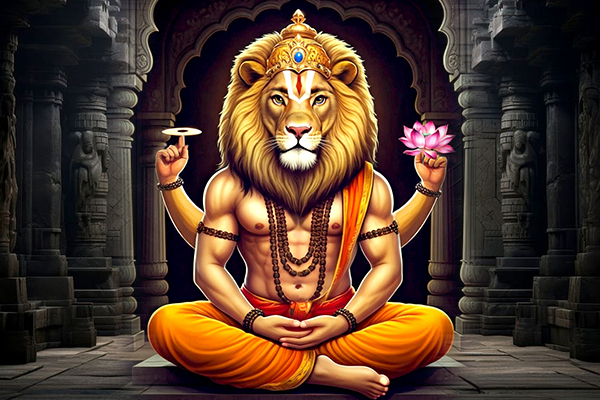
The Sanskrit word Narasimha combines 'Nara' (man) and 'Simha' (lion), symbolizing Bhagwan Vishnu's half-man, half-lion form. Known by names like Hiranyakashipudvamsa (destroyer of Hiranyakashyipu) and Bhairavadambara (the one whose roar causes terror), Narasimha represents both strength and protection. His form is revered differently across India, such as Nrusingha or Narasimba.
Prahlada, the son of the demon King Hiranyakashyipu, was a devout follower of Vishnu, which enraged his father. Despite the King’s many attempts to kill him, including a plot with his sister Holika to burn Prahlada alive, the Bhagwan protected him every time. Hiranyakashyipu, granted a boon of invincibility by Bhagwan Brahma, could not be killed by any weapon, man, or animal, nor during day or night. However, these conditions were eventually outsmarted by Bhagwan Narasimha.
To protect Prahlada, Bhagwan Vishnu appeared as Narasimha, taking the form of a half-man, half-lion at twilight—neither day nor night—and killed the King with His claws, fulfilling His promise and restoring cosmic balance. This act demonstrated that no evil could withstand divine justice.
Bhagwan Narasimha symbolizes hope, the triumph over oppression, and the destruction of both external and internal evil. His avatar represents innovative resistance against injustice and the eradication of demonic forces. Narasimha's iconography is especially prominent in Southern India, where statues and paintings of the deity are widespread. In Bhagwan Hanuman's Panchmukhi (five-faced) form, Narasimha is one of the faces, highlighting Hanuman's deep devotion to Bhagwan Vishnu.
Stories of Narasimha Jayanti Festival
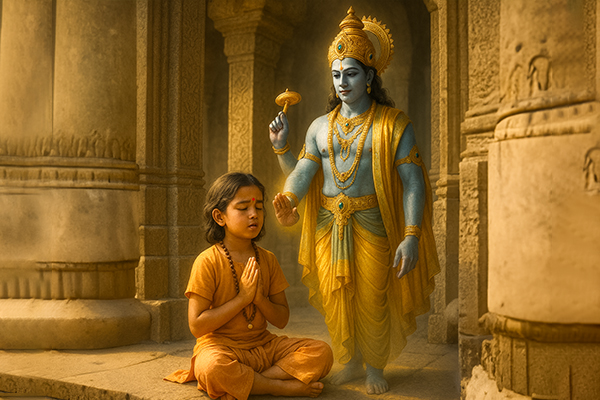
The Shrimad Bhagavatam, or Bhagavata Purana, recounts the captivating pastimes of Bhagwan Narasimha, the half-man, half-lion incarnation of Bhagwan Vishnu, and the devotion of Prahlada Maharaja, the son of the demon King Hiranyakashipu. Hiranyakashipu ruled over the kingdom of Multan, a region of present-day Punjab, and held a deep grudge against Bhagwan Vishnu, who had killed his brother Hiranyaksha. Fueled by this resentment, the King despised his own son, Prahlada, for being a devout worshiper of Vishnu. However, this hatred did not start at the outset. The King initially wanted the best education for his son and had him trained by proficient teachers, Sanda and Amarka, in various fields such as politics, economics, and architecture. Despite this, Prahlada’s heart was absorbed in the devotion to Bhagwan Vishnu, and he would often ignore the subjects taught to him, choosing instead to chant the sacred names of the Bhagwan.
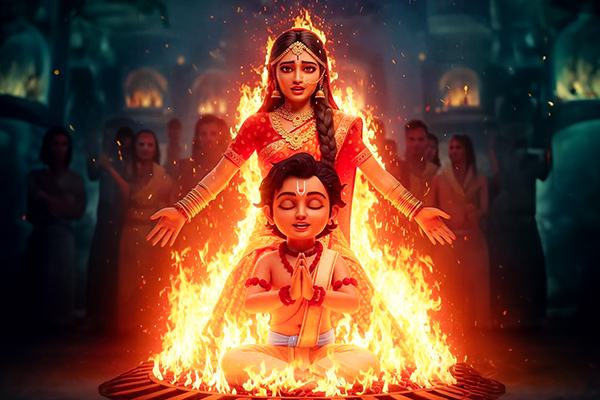
When the teachers failed to dissuade Prahlada from his devotion, they informed the King, who became furious. He tried to reason with his son, asking where he had learned such devotion to Vishnu. Prahlada responded with deep wisdom, explaining that those attached to material life fail to develop love for the Bhagwan and remain caught in the cycle of birth and death. The duty of every person, he explained, is to seek shelter from a pure devotee and thus understand the Divine. The King, who desired to be worshipped as God, was enraged by Prahlada’s unwavering devotion to Vishnu. In his anger, he made several attempts to kill his son but failed every time. Finally, he turned to his sister Holika, who had a boon that protected her from fire, and instructed her to burn Prahlada alive on a pyre. However, Holika’s attempt to harm Prahlada backfired, as she was consumed by the flames, while Prahlada remained unharmed.
Frustrated and determined, Hiranyakashipu confronted his son once again, questioning the presence of God. He mocked Prahlada's unwavering faith, asking him if Vishnu was present in the columns of his palace. Prahlada, with complete faith, affirmed that the Bhagwan resides everywhere. The King, laughing at this, struck one of the palace columns in anger. Suddenly, a mighty tumultuous sound erupted, and to the King’s horror, Bhagwan Vishnu appeared in His Narasimha form, emerging from the column. Narasimha, with his lion's face and human body, swiftly killed the demon King, thus fulfilling the divine prophecy and protecting Prahlada. This event is a clear manifestation of the power of divine intervention, where Vishnu, in His fierce Narasimha form, ensured the triumph of good over evil.
The Rigveda contains references to a 'wild-beast, mountain prowling' creature, which is believed by some scholars to be an early reference to Bhagwan Narasimha. In addition, the legend of Namuchi, an Asura, shares several parallels with the Narasimha story. According to the Namuchi legend, Namuchi, who had a power struggle with the Gods, made a pact with Bhagwan Indra that he could not be killed by Indra's palm or fist, during night or day, and by either a dry or wet weapon. However, Namuchi, in his deceit, stole the elixir of immortality (Soma), which contained all of Indra's strength. This put Indra in a dilemma, as he had promised to honor the terms of the pact.
Indra sought the help of Goddess Saraswati and the Ashvins, twin sons of the Sun God, Surya. Together, they devised a cunning plan to kill Namuchi, which involved using the foam of water as a weapon, a substance neither dry nor wet. The attack was carried out at twilight, neither day nor night, thus keeping Indra's promise. In the end, Namuchi was slain, and the stolen Soma was retrieved. Scholars have noted that there are striking similarities between the story of Narasimha and the legend of Namuchi, particularly in the demons’ conditions for invincibility and the divine solutions to these conditions.
The Narasimha avatar is mentioned in several key Hindu texts, including the Ramayana, Vishnu Purana, Shiva Purana, Harivamsa, and others. Additionally, the Mahabharata also references Bhagwan Narasimha, highlighting the significance of this incarnation in Hindu cosmology. Through these various texts, the legends and stories of Narasimha serves as an enduring reminder of the power of divine protection, the triumph of righteousness, and the transformative nature of devotion to Bhagwan Vishnu.
How to celebrate Narasimha Jayanti
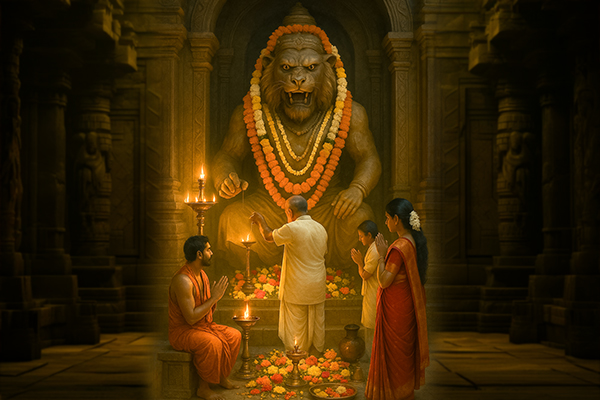
Narasimha Jayanti involves various devotional activities, such as fasting, prayers, and participating in temple rituals. Devotees typically observe a fast, refraining from consuming food or water throughout the day, to purify the body and mind. This fast is believed to bring spiritual blessings and protection from evil forces.
On Narasimha Jayanti, devotees gather in temples to offer prayers, chant mantras, and sing hymns in praise of Bhagwan Narasimha. Special rituals are performed, including reciting the Narasimha Kavacham (a protective prayer) and performing the Abhisheka (ritual bathing of the deity). In many temples, an evening ceremony is held to mark the appearance of Bhagwan Narasimha, symbolizing His emergence at twilight.
In addition to temple visits, devotees often engage in spiritual practices such as meditation and reading the Bhagavata Purana, which narrates the story of Bhagwan Narasimha. Dramatic performances of the Narasimha-Hiranyakashyipu story, especially in South India, are also a common part of the celebration, offering a theatrical retelling of the Bhagwan’s triumph over evil.
Overall, Narasimha Jayanti is a day to reflect on the qualities of Bhagwan Narasimha—strength, courage, and protection—and to seek His blessings for overcoming obstacles and evil in one's life.
Narasimha Jayanti Puja Vidhi (Puja Procedure)
.jpg)
The puja is performed to seek protection from evil forces and invoke the Bhagwan's blessings for strength and courage. Here is a procedure for performing the puja:
- Cleanse the Puja Area: Begin by cleaning the place of worship and setting up an altar with Bhagwan Narasimha’s idol or picture.
- Purify Yourself: Take a bath to purify yourself before beginning the puja and wear clean clothes.
- Light a Lamp or Diya: Light an oil lamp or diya, symbolizing the removal of darkness and the presence of divine light.
- Offer Fresh Flowers and Fruits: Place fresh flowers and fruits as offerings to Bhagwan Narasimha.
- Recite the Narasimha Ashtakshara Mantra: Chant the sacred Narasimha Ashtakshara mantra for protection and to invoke Bhagwan Narasimha's blessings.
- Offer Incense and Camphor: Burn incense sticks and camphor to purify the space and create a divine atmosphere.
- Perform Abhisheka (Ritual Bath): Pour water, milk, or honey over the idol or picture of Bhagwan Narasimha while chanting sacred mantras.
- Recite the Narasimha Kavacham: Chant the Narasimha Kavacham (a protective prayer) to seek the Bhagwan's protection from all evils.
- Offer Prayers for Protection and Strength: Pray to Bhagwan Narasimha to protect you and your loved ones from all negative influences and give you the strength to overcome obstacles.
- Conclude with Prasad: Distribute the offered prasad (holy food) among family members, and conclude the puja with gratitude.
The Narasimha Jayanti puja is a time to seek Bhagwan Narasimha’s divine protection and blessings. By performing this ritual with devotion, you honor His victory over evil and pray for strength, courage, and peace in your life.
Narasimha Jayanti Puja Mantras
The mantra of Bhagwan Narasimha which removes obstacles from the path is the Sri Narasimha Mantra.
उग्रं वीरं महाववष्णं ज्वलन्तं सववतोमणखम्। नृवसंहं भीषणं भद्रं मृत्यणमृत्यणं नमाम्यहम्
Ugram Viram Maha Vishnum Jvalantam Sarvato Mukham
Nirisimham Bhishanam Bhadram Mrutyur Mrutyum Namamy Aham
Meaning:
May Bhagwan Narasimha, who is highly ferocious and brave and the emanation of Bhagwan Maha Vishnu, full of effulgence, terrific and auspicious and the death of death blesses us as we bow down to Him.
Narasimha Ashtakshara Mantra
'Om Namo Narasimhaya,
Prahlad Vairagya Pradayine,
Hiranyakashipu Vamsa,
Gauri Tanaya Dayine.'
Meaning:
Om Namo Narasimhaya:
Salutations to Bhagwan Narasimha.
Prahlad Vairagya Pradayine:
The one who gave Prahlada devotion and detachment.
Hiranyakashipu Vamsa:
The one who destroyed Hiranyakashipu, the demon king.
Gauri Tanaya Dayine:
The one who is compassionate to the son of Gauri (referring to Bhagwan Shiva's consort, Parvati).
This mantra is often recited during the Narasimha Jayanti festival and on other occasions to seek Bhagwan Narasimha's protection, strength, and blessings. It is said to remove fear, defeat evil forces, and protect the devotee from harm.
Narasimha Kavacham
ॐ जपाकुसुमसङ्काशं काश्यपेयं महाद्युतिम्।
तमो रिंह स्वामिनं शान्तं सर्वरोग निवारिणं॥
Translation:
Om, I bow to Bhagwan Narasimha, who has a complexion like the red hibiscus, who is the destroyer of all sins, the greatest of all deities, who removes all diseases.
नमः श्रीनारसिंहाय सहस्त्राक्षाय विक्रमाय,जन्म मृत्यु प्रदोष शमनाय स्वाहा।
I offer my salutations to Bhagwan Narasimha, who has thousands of eyes and the supreme power to eliminate the cycle of birth and death.
तस्य रक्षणं नित्यं सर्व भय निवारिणं।प्रदाय सर्व सम्रद्धि सुख सम्पत्तिकं।
This Bhagwan Narasimha is the eternal protector, removing all fears and bringing prosperity, wealth, and happiness.
नारसिंह महाक्रूर ओजस्वी महाक्रष्ट।सर्व दोष निवारिणं महापाप विनाशकं।
O mighty Narasimha, the destroyer of evil, the remover of all obstacles, and the eraser of sins.
The Narasimha Kavacham is often recited during prayers or pujas, especially on occasions like Narasimha Jayanti, to invoke Bhagwan Narasimha's blessings for protection and spiritual upliftment. This powerful kavach can shield devotees from negative energies and bring divine blessings into their lives.
Narasimha Jayanti Vrat Vidhi (Fasting Procedure)
.jpg)
Narasimha Jayanti is a day when devotees observe fasting to honor Bhagwan Narasimha and seek His divine protection and blessings. The fasting procedure is an essential part of the celebration, believed to purify the body and mind.
Here's how to observe the Vrat (fast) on this auspicious day:
- Prepare Yourself Mentally and Spiritually: Before starting the fast, it is important to prepare mentally. Devotees should purify their thoughts, set an intention for the fast, and resolve to focus on devotion and spiritual practices throughout the day.
- Wake Up Early and Perform Morning Rituals: On the day of Narasimha Jayanti, wake up early before sunrise and perform personal rituals, such as taking a bath and cleaning the place of worship. Begin with prayers to Bhagwan Narasimha and light a lamp to set the spiritual tone for the day.
- Observing the Fast: The primary focus of the fast is abstaining from food and water for the entire day. However, those who find it difficult may choose to consume fruits, nuts, and milk. The fast should be observed with full devotion, avoiding distractions and focusing on prayers, chanting, and spiritual activities.
- Engage in Prayers and Mantra Chanting: Throughout the day, devotees should chant mantras dedicated to Bhagwan Narasimha, such as the Narasimha Ashtakshara Mantra or Narasimha Kavacham, to invoke His protection and blessings. This can be done either at the temple or at home in front of the deity's idol.
- Offer Prayers for Protection and Strength: During the fast, devote sincere prayers asking Bhagwan Narasimha for protection from evil, strength to overcome obstacles, and blessings of good health and prosperity. Focus on meditation, reflecting on Bhagwan Narasimha's qualities of courage and righteousness.
- Conclude the Fast with Prasad: After the puja and fasting, break the fast by partaking of prasad (sacred food offerings) with family and friends. Thank Bhagwan Narasimha for His blessings, and share the prasad with others as a symbol of divine grace and gratitude.
By observing this vrat with sincerity and devotion, devotees strengthen their connection with Bhagwan Narasimha and invite His divine protection and guidance into their lives.
Narasimha Jayanti Vrat Katha (Traditional Fasting Story)
.jpg)
Once, there was a great devotee named Gajendra, the king of elephants. Gajendra was known for his unwavering devotion to Bhagwan Vishnu. One day, while drinking water from a lake, Gajendra was suddenly attacked by a crocodile, which caught his leg. Despite his struggle and efforts to free himself, Gajendra found himself unable to escape.
As the crocodile pulled him deeper into the water, Gajendra, in his last moments, called out to Bhagwan Vishnu with a prayer. His call was not just for physical relief, but a deep surrender to the divine, invoking the eternal protector. “Narayana!”, he cried. In that moment, Bhagwan Vishnu responded to Gajendra’s sincere plea and appeared, riding his divine vehicle, Garuda.
Bhagwan Vishnu, seeing Gajendra’s devotion and his call for divine assistance, immediately took action. He appeared in the form of Bhagwan Narasimha, with his lion-like head and human body, to swiftly rescue Gajendra and kill the crocodile that had been tormenting him. As Bhagwan Narasimha tore apart the crocodile with His mighty claws, He also liberated the spirit of the crocodile, revealing that it was the cursed form of a once-powerful sage who had been reborn as a crocodile due to a past transgression.
In the aftermath of Gajendra’s liberation, he offered heartfelt prayers to Bhagwan Narasimha, expressing his gratitude for the divine intervention. Bhagwan Narasimha, pleased with Gajendra’s devotion, blessed him with eternal protection and spiritual victory.
The Spiritual Significance of the Vrat Katha
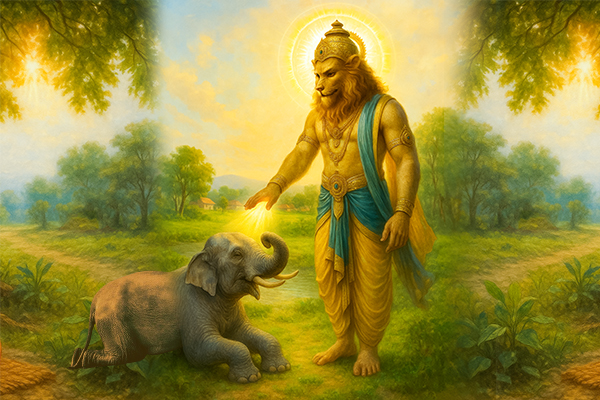
This Narasimha Jayanti Vrat Katha emphasizes not only the power of Bhagwan Narasimha to destroy evil but also the profound impact of surrender and devotion. The fast on Narasimha Jayanti is a way to spiritually cleanse oneself and seek divine protection, just like Gajendra did when he called upon Bhagwan Vishnu with full faith.
Devotees who fast on Narasimha Jayanti in the manner of Gajendra’s surrender are believed to gain immense protection from challenges and obstacles, purify their souls, and receive Bhagwan Narasimha’s blessings for their devotion and surrender. The fasting symbolizes the purification of the mind and the removal of negative forces, both internal and external.
Through this fasting story, devotees are reminded of the power of humility, surrender, and the unshakable faith in Bhagwan Narasimha, whose grace is said to conquer all evils and safeguard those who seek His protection with true devotion.
Puja Utensils, Essentials
Rudra Centre brings an extensive collection of Puja Articles which caters to all that is required for daily and special Puja Vidhis. We offer variants of designs and sizes in each category. The list includes handcrafted Puja Mandirs, Puja Pedestals, offering Bowls, Panchpatra, intricately carved Puja Thalis, Abhishek Vessels, in different materials, Pure Silver/German Silver articles like Kalash, set of Shodash Upachara and Several other Puja Articles, which we deliver at your doorstep.
Visit the complete collection
Narasimha Statue in Brass
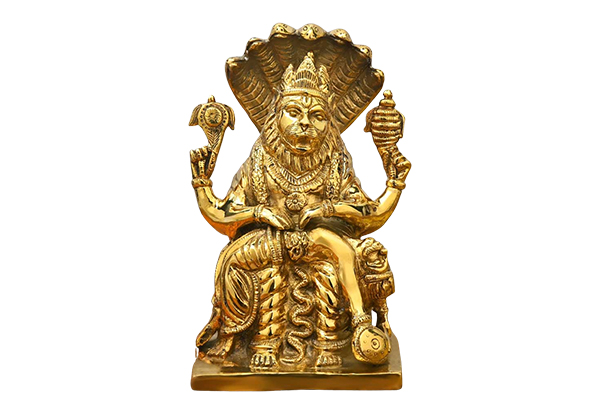
An elegantly created brass idol of Bhagwan Narasimha Dev killing Hiranyakashipu. Best gift for your near and dear ones.
Narasimha Lakshmi Statue in Brass
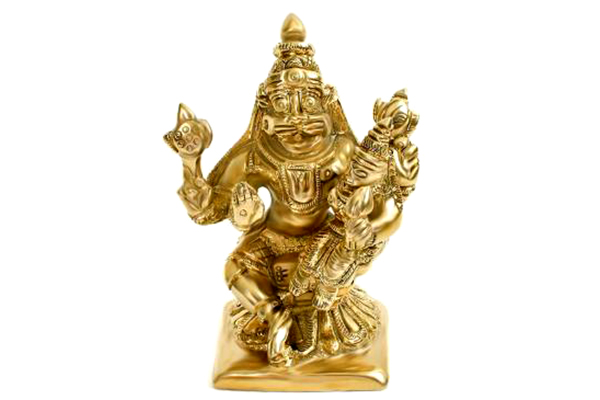
An elegantly created brass idol of Bhagwan Narasimha Dev and Goddess Lakshmi. Best gift for your near and dear ones.
Narsimhadev Yantra
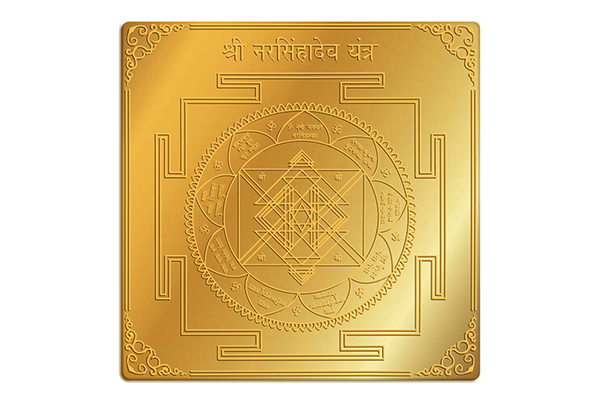
Worshiping the Narasimha Yantra provides benefits such as fear removal and protection from evil. It also provides the acquisition of powers, knowledge and professional development, and the destruction of enemies. Worshippers of the Narsimha Yantra experience peace of mind and religious upliftment. Narsimhadev Yantra protects you from all kinds of evil forces. You remain immune to the negative effects of black magic and bad omen. Your fears are gone, and your self-esteem is boosted.
Narasimha Shaligram Murti
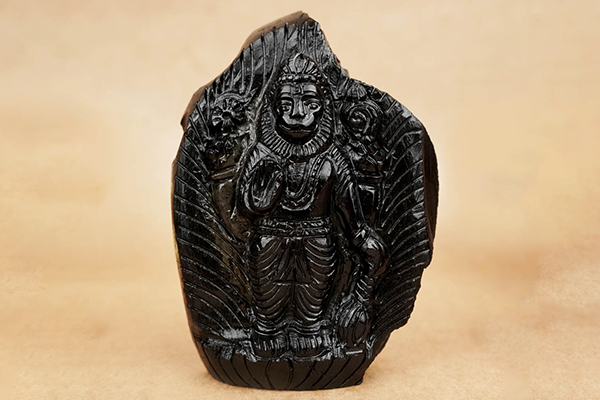
A deity idol of Bhagwan Narasimha mad of rare material; Shaligram found the Gandaki Kali River in Nepal. Best for daily worship.
Bhagwan Narasimha Puja Mantra Japa and Yajna
Bhagwan Narasimha symbolizes the victory of Dharma over adharma or good over evil. For His devotees Bhagwan Narasimha is the supreme protector against all evils and misfortunes. Bhagwan Narasimha figures prominently in numerous ancient scriptures including the Vedas, Puranas and even Mahabharata. Bhagwan Narasimha is worshipped in His various forms such as Ugra Narasimha, Krodha Narasimha, Malola Narasimha, Jwala Narasimha, Varaha Narasimha, Bhargava Narasimha, Karanja Narasimha, Yoga Narasimha and Lakshmi Narasimha.
Bhagwan Narasimha Puja & Mantra Japa Benefits
- For supreme protection against accidents, diseases and ailments
- For success, wealth, victory, prosperity and abundance
- For peace of mind, cordial relations and spiritual upliftment
- For divine grace and blessings of Bhagwan Narasimha
Puja service includes: Kalash Sthapana, Panchang Sthapana (Gauri Ganesh, Punyavachan, Shodash Matrika, Navgraha, Sarvotabhadra), 64 yogini Pujan, Shetrapal Pujan, Swasti Vachan, Sankalpa, Ganesh Pujan and Abhishek, Navgraha Pujan and 108 chants of each planetary mantra, Invocation of major Gods and Goddesses in Kalash, Bhagwan Narasimha Yantra Pujan, Narasimha Strotra and kavach recitation, Bhagwan Narasimha mantra Japa, Homa and Aarti.
Rudra Centre Puja Services is the oldest and most trusted Online Puja Services provider in the world. Over 20 years we have organized Yagnas, Pujas, Homas and Kathas like Ati Rudra Mahayajna, Sahasra Chandi Homa, Akhand Ramayan Paath, Shiva Maha Puran Katha, 4 Prahar Mahashivratri Mahapuja with teams of 100’s of curated priests for the benefit of mankind and our global clientele.
Lakshmi Narasimha Swamy Pooja Vidhanam and Homam
Laxmi Narasimha puja is performed to eliminate suffering and misfortune and restore justice and fulfil the right intentions.
Lakshmi Narasimha Pooja, Vidhanam, & Homam Benefits
- To overcome debts, financial difficulties, relationship issues.
- For wealth and fulfilment of intentions.
- For protection against diseases and ailments.
- For success in court cases and legal matters.
Rudra Centre Puja Services is the oldest and most trusted Online Puja Services provider in the world. Over 20 years we have organized Yagnas, Pujas, Homas and Kathas like Ati Rudra Mahayajna, Sahasra Chandi Homa, Akhand Ramayan Paath, Shiva Maha Puran Katha, 4 Prahar Mahashivratri Mahapuja with teams of 100’s of curated priests for the benefit of mankind and our global clientele.
Conclusion
Narasimha Jayanti is a powerful reminder of the eternal triumph of good over evil and the unwavering protection of the divine for His devotees. Celebrated with immense devotion and fervor, this auspicious day honors the fierce yet compassionate form of Bhagwan Narasimha, who embodies the strength to overcome obstacles and the love to protect the faithful. The festival encourages us to reflect on our own lives, to cleanse our hearts of negative emotions, and to draw closer to the divine through devotion, fasting, prayers, and rituals.
This day serves as a beacon of hope and courage, reminding us that no matter how formidable the challenges may seem, there is always a divine presence ready to shield and guide us through. Just as Bhagwan Narasimha appeared in the most unexpected form to protect Prahlada and destroy evil, we too are called to cultivate resilience, unwavering faith, and the courage to face our struggles head-on. The divine power of Bhagwan Narasimha is not bound by time or circumstance, and His blessings continue to uplift all who seek His refuge.
On Narasimha Jayanti, we not only celebrate Bhagwan Vishnu’s magnificent avatar but also renew our commitment to righteousness, resilience, and devotion. It is a day to seek His blessings for peace, protection, and prosperity, and to remind ourselves that with unwavering faith, we can conquer any challenge life throws our way. As we partake in this divine celebration, may Bhagwan Narasimha’s blessings bring us strength, courage, and the ultimate victory over the darkness in our hearts and in the world around us.

-in-Astrology.jpg)
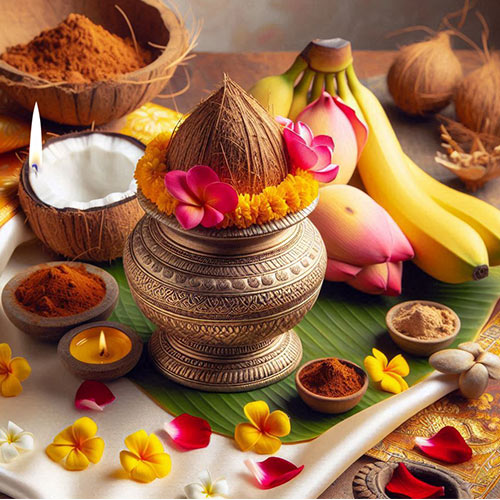
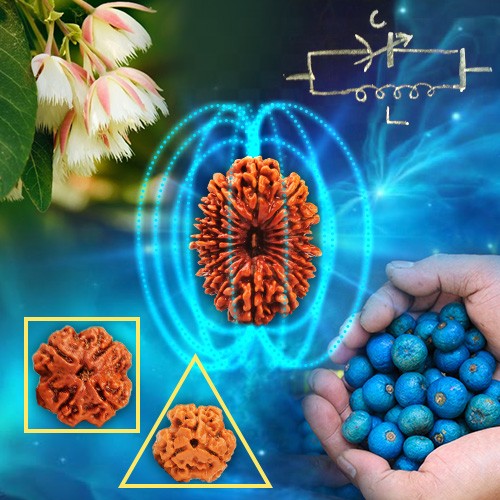
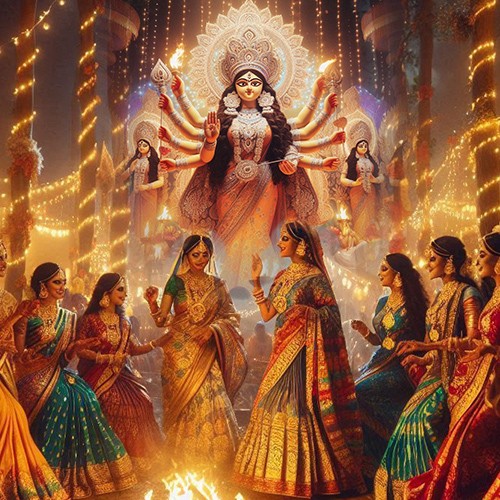


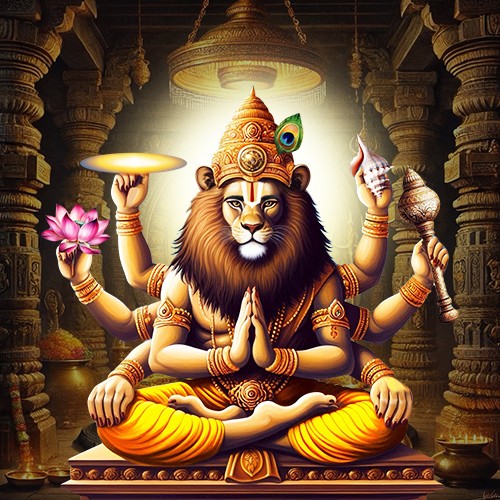
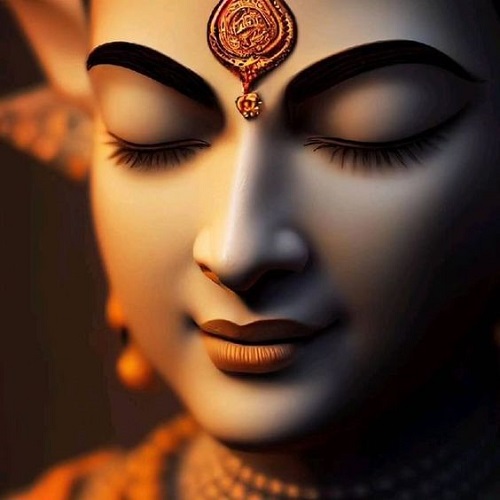
.jpg)
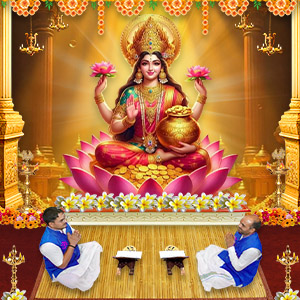
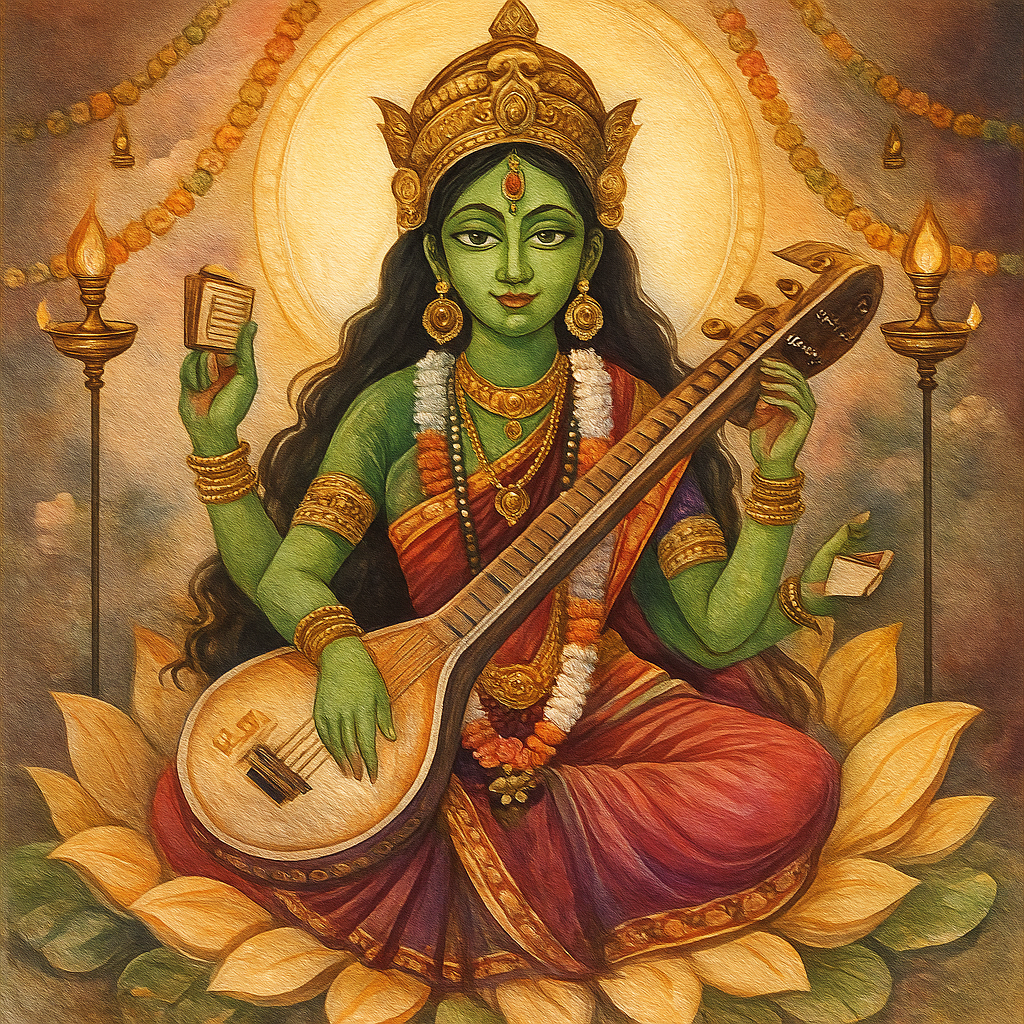
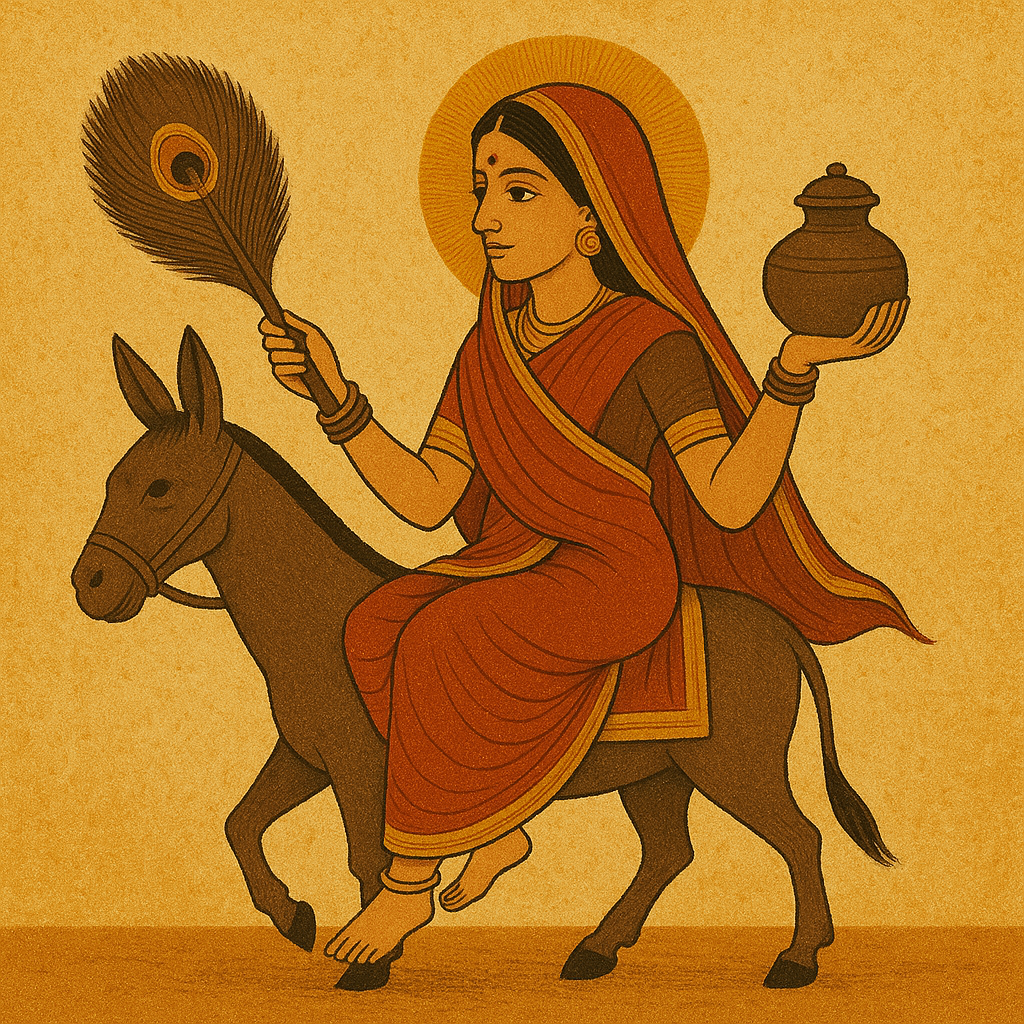
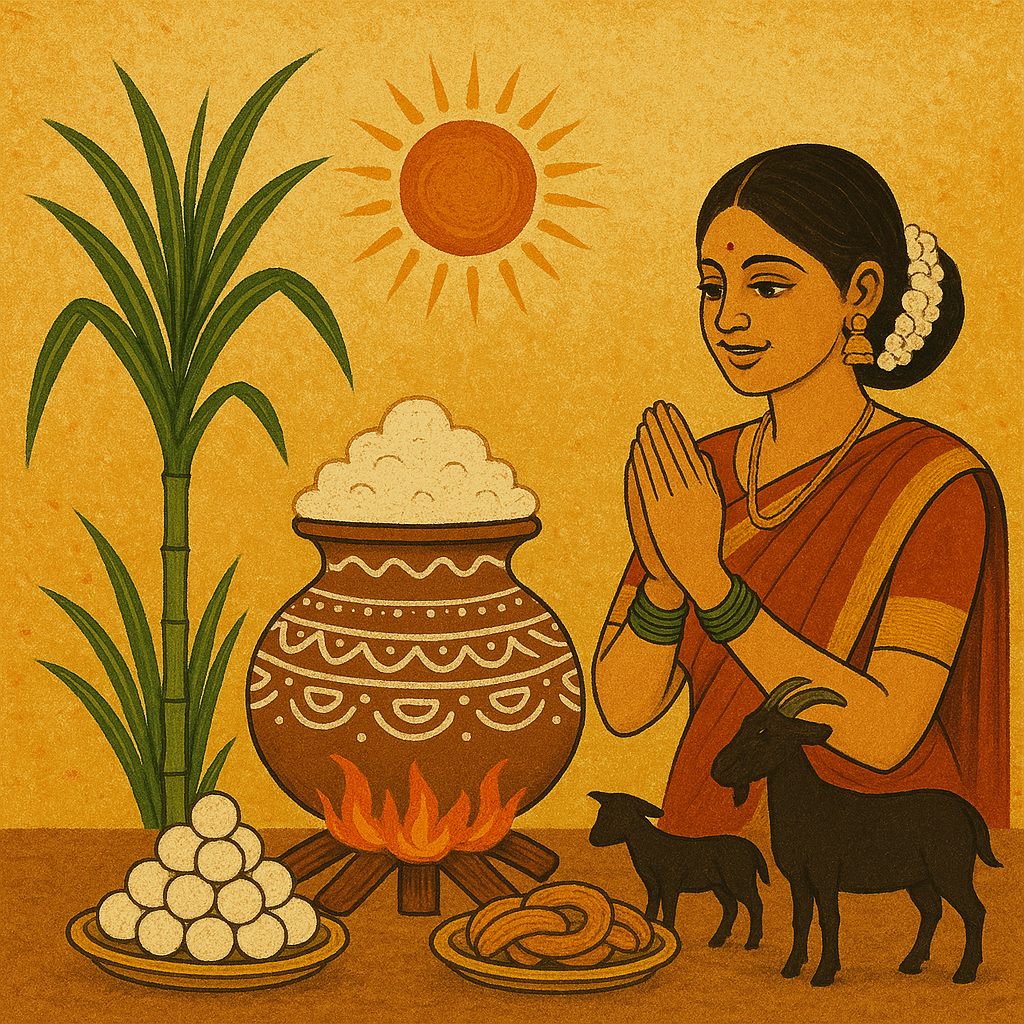
Molly kalra
|May 8, 2025
Wow explain v beautifully.
Mekala Narasimhudu
|April 14, 2024
M.Narasimhudu